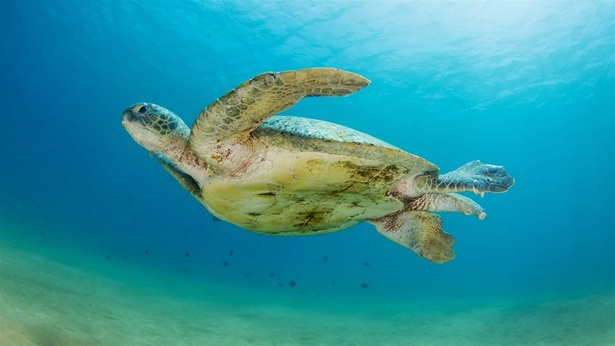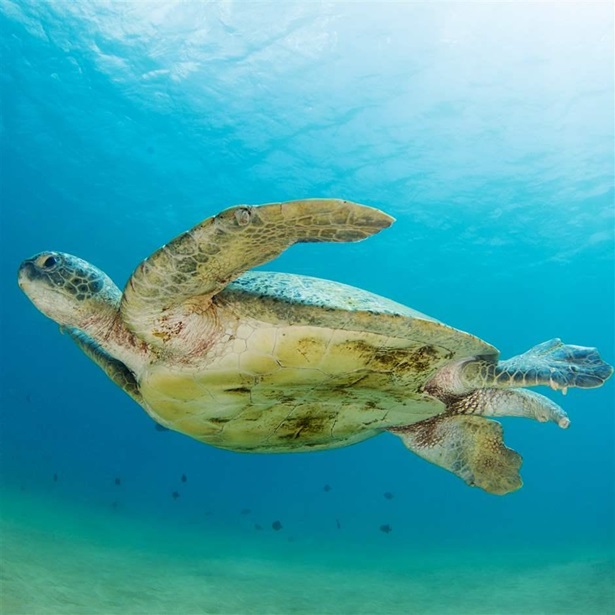Ascension Island is one of the most remote inhabited islands on Earth, located in the South Atlantic Ocean midway between Angola and Brazil. It forms part of the U.K. Overseas Territory of St. Helena, Ascension, and Tristan da Cunha.
Though the volcanic island measures only 88 square kilometers (34 square miles), its exclusive economic zone (EEZ) is nearly twice the size of the United Kingdom, covering approximately 443,000 square kilometers (171,043 square miles). Due to its remoteness, Ascension has a high abundance of flora and fauna, with numerous endemic species—found nowhere else—and a variety of marine life originally from West Africa and the Caribbean. The island has no indigenous population; most of its more than 800 inhabitants are from St. Helena, the U.K., or the U.S.
In March 2019, the U.K. Government committed its support to the Ascension Island Council’s proposal to designate a marine protected area (MPA) that would cover 443,000 square kilometers (171,000 square miles) of the island’s EEZ. Such a bid would help safeguard the abundant marine life surrounding the island, improve local fisheries, and create tourism opportunities. Studies show that well-designed and well-managed MPAs convey those benefits and are home to more and bigger fish than are unprotected areas.
Ecological significance
Ascension Island’s marine ecosystem is one of the most intact in the Atlantic, sustaining some of the ocean’s largest yellowfin tunas and blue marlins, as well as sharks, rock hind groupers, and spotted moray eels. The waters are home to at least 11 endemic fish species, including the resplendent pygmy angelfish, Ascension goby, marmalade razorfish, and Ascension wrasse, as well as two endemic species of shrimp, one of which had been found in only two saltwater pools on the island. Marine mammals commonly spotted here include bottle-nose and pan-tropical spotted dolphins, and sperm and humpback whales.
Endangered green turtles—protected here under a 1930 harvesting ban—migrate to Ascension each year to mate and nest, and observers have seen critically endangered hawksbill turtles in these waters, although they aren’t known to nest on the island.
Ascension is also an important sea-bird breeding and nesting site in the tropical Atlantic, providing a breeding area for 12 species, including the brown noddy, sooty tern, and endemic frigate bird.
Within the U.K., The Pew Trusts operate as part of the Great British Oceans (GBO) coalition, a group of non-governmental organisations that advocate for large, highly protected MPAs in the U.K.’s Overseas Territories. GBO's work with the island council to protect marine habitats helped lead to the 2019 commitment to protect Ascension's waters. As part of GBO, the Pew Bertarelli Ocean Legacy Project supports the designation of the entire Ascension EEZ as a highly protected MPA, as do the community and locally elected Island Council, which has driven the efforts to create an MPA.
Pew Bertarelli Ocean Legacy Project
The Pew Charitable Trusts and Dona Bertarelli created the Pew Bertarelli Ocean Legacy Project, with the shared goal of establishing the first generation of ecologically significant, large, and effective marine protected areas (MPAs) around the world. Today, the Pew Bertarelli Ocean Legacy Project also seeks to connect MPAs and help conserve key migratory species and entire marine ecosystems. These efforts build on more than a decade of work by Pew and the Bertarelli Foundation, led by Dona Bertarelli, to create large-scale, highly or fully protected MPAs. Between them, they have helped to obtain designations or commitments to safeguard nearly 12.6 million square kilometers (4.8 million square miles) of ocean by working with communities, local leaders, philanthropic partners, Indigenous groups, government officials, and scientists. Dona Bertarelli is a philanthropist, investor, sportswoman, and strong advocate for ocean conservation. The Pew Charitable Trusts is driven by the power of knowledge to solve today’s most challenging problems, including the need for effective marine conservation.



